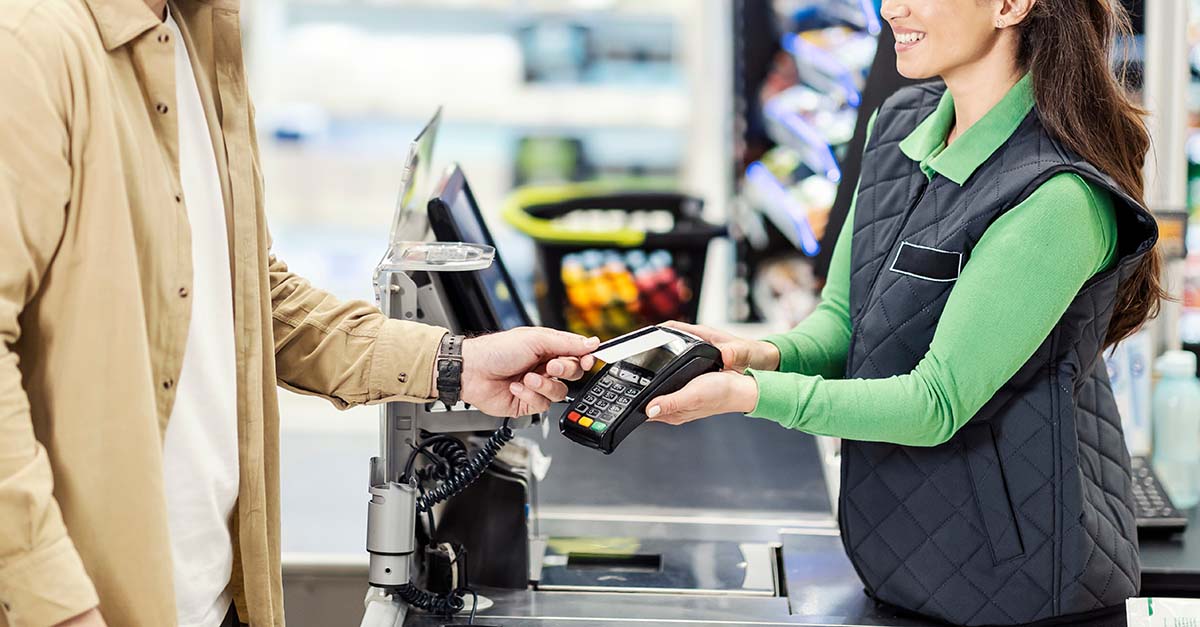Consumer spending trends in 2024 and the rise of the uncommitted consumer
Breaking down Upside's inaugural Consumer Spend Report

Dr. Thomas Weinandy
Consumer spending trends in 2024 and the rise of the uncommitted consumer


With 100,000 retail partners across the grocery, restaurant, fuel, and c-store industries — not to mention 35 million American consumers in our digital marketplace — Upside securely processes enormous amounts of data every single day. When we can, we use that data to help shed light on changes in consumer behavior and assist our retail partners with their most pressing business decisions.
In that spirit, we recently published our latest findings in our inaugural Consumer Spend Report. The report — which debuted on The Today Show — sheds light on current consumer sentiments, along with how those sentiments and household finances shape buying behavior.
To compile this report, our team analyzed 1.1 billion transactions from thousands of retail partners and heard directly from more than 7,000 consumers. This blend of qualitative and quantitative data illustrated for us a robust picture of consumer behavior.
You can access the full report here, or get a preview of the most important insights below.
Our key takeaway: The rise of the uncommitted customer

Cross-shopping at different locations or formats within retail categories has always been fairly normal customer behavior. But what stands out in the data today is the growing prevalence of that cross-shopping, and what we call the uncommitted customer. We’ve heard retailers refer to these customers as “secondary and tertiary,” “infrequent,” “irregular,” “occasional,” or “lapsed,” among other terms. Whatever word you use, these shoppers are not loyal to one retailer or brand.
Uncommitted customers are not rare — they make up the majority of customers in America. As a matter of fact, you might be one of them yourself. Think about it: paper towels and other household products at a wholesale club, meat and produce at your local grocer, snacks at Trader Joe’s?
Most of us exhibit some degree of uncommitted behavior without even thinking about it. And when we do it, it’s because we’re thinking primarily about our own lives and how to maintain the standard of living we’re used to, without changing our budgets.
Many times, these consumers are actually loyalty members at each of the banners they visit, but they are not behaving loyally at any one of those stores. Uncommitted customers represent a hard-to-win base — but they’re not impossible. With that customer base growing today, winning more visits and more spend from these shoppers represents a tremendous opportunity for retailers.
The five trends driving consumer spending habits
1. Consumer sentiment and the economic reality are misaligned.
Though consumer spending continues to grow and inflation has cooled dramatically since its highs in the summer of 2022, consumer economic sentiment shows that Americans are still feeling skeptical about the strength of the economy.
According to our survey, the majority of respondents see the economy as somewhat worse or much worse than one year ago. It makes sense, then, that negative consumer sentiments regarding household finances prevail, as well. About 43% of respondents see their own situation as somewhat worse or much worse than it was a year ago, a plurality for that particular question.

2. Price sensitivity is breeding more cross-shopping.
With customers now having more options in more channels today than ever before, we’re seeing an increase in cross-shopping behavior. Our survey data shows that price sensitivity is driving grocery shoppers, for example, to visit about three different stores monthly.
Our report illustrates consumer behavior in each of our four key retail categories, along with explanations that show why shoppers are behaving in those ways. Across all categories, this cross-shopping trend is a direct byproduct of a pervasive “save and conserve” mindset, and it’s having an effect on retailers.

3. Inflation-adjusted sales are down across categories.
Though many retailers might be experiencing increases in topline sales, adjusting those figures for inflation often shows a less rosy picture. As it turns out, inflationary price hikes are driving many of these increases, creating an illusion of growth.
Though the impact is largely similar across retail categories, unique factors and circumstances are at play for each group of retailers. Our report dives into the specifics.
4. Loyalty programs are critical… but they don’t change buying behavior.
In response to cross-shopping, retailers often turn to customer loyalty programming to differentiate their offering. Our survey shows that’s a wise decision, because just over 90% of consumers at least consider loyalty (or its absence) when making decisions about where to shop. Plus, 72% of consumers agree it is important to earn loyalty rewards or cash back at a given retailer.
But our report illustrates a gap between the number of customers who say that loyalty programs are important for their buying decisions, and the number of customers who frequently use the benefits of those programs.

5. Though dynamic pricing is relevant, widespread adoption is far off.
Finally, we’ve observed the increasing popularity of dynamic pricing, a revenue management strategy by which a retailer moves the prices of its offerings up or down based on business needs. On the consumer side, awareness of the concept is going up; for brick-and-mortar retailers, dynamic pricing is becoming more accessible.
Though dynamic pricing has been in the news much more frequently as of late, it’s not a new concept; a discounted matinee ticket at a movie theater is just one example. Retailers usually pursue dynamic pricing in order to maximize profit. They consider the state of their business at a given time — perhaps they have spare resources, or perhaps they have a line out the door — and make changes based on that information.
But what do consumers think about it? We surveyed consumers about how often these concepts appear in their lives, as well as with how they feel about them.
The full Consumer Spend Report is available now. Grab your copy here.
Share this article:
Dr. Weinandy is a Senior Research Economist at Upside, providing valuable insights into consumer spending behavior and macroeconomic trends for the fuel, grocery, and restaurant industries. With a Ph.D. in Applied Economics, his academic research is in digital economics and brick-and-mortar retail. He recently wrote a book on leveraging AI for business intelligence.
Request a demo
Request a demo of our platform with no obligation. Our team of industry experts will reach out to learn more about your unique business needs.

















